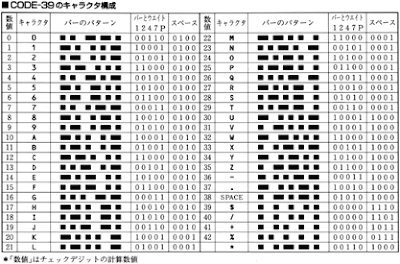Barcodes are everywhere, on the packaging of every product sold commercially in stores, on parcels for delivery, and even used for identification on membership cards. They are even used to make payments these days. What exactly is a barcode?
A barcode is an image which consists of bars and spaces. This is a very popular method to store data (numerals and characters) in a machine-readable way representation.
History of Barcodes
The barcode was created by Norman Joseph Woodland and Bernard Silver and patented in the US in 1951. The creation depended on Morse code that was extended to thin and thick bars.
Barcodes turned out to be monetarily successful when they were utilized to automate supermarket checkout systems, an errand for which they have gotten become almost universal. The Uniform Grocery Product Code Council had picked, in 1973, the barcode configuration created by George Laurer. Laurer's barcode, with vertical bars, printed better than the circular barcode created by Woodland and Silver. Their utilization has spread to numerous different assignments that are conventionally alluded to as programmed recognizable proof and information catch (AIDC). The first checking of the now-omnipresent Universal Product Code (UPC) barcode was on a pack of Wrigley Company bubble gum in June 1974 at a Marsh general store in Troy, Ohio.
How Do Barcodes Work?
To read barcodes effectively, you'll have to have a gadget that can scan the code and a framework for deciphering the information read from it. Similar to the idea of morse code, each character is mapped to a fixed number of units. Each individual unit can either be a bar or a space, and wide or narrow in width. An example is CODE 39, which has 3 out of 9 wide bars/ spaces. You can refer to the table below for the actual character mapping.
 |
| CODE 39 Character Composition (click to enlarge) |
Why do barcode readers read the white space and not the black lines?
This is how readers read barcodes. The readers first shines LED/ laser on the barcode and measures the amount of light reflected. Since white areas reflect more light and black areas reflect the least, the readers is indirectly "reading the white spaces" of the barcode.
Are Barcode Readers Universal?
Scanning an item in a store with that equivalent store's barcode reader will probably produce data on that product, for example, its name and cost. This is due to the reader being programmed to decipher that particular barcode design (potentially a UPC barcode) and is linked to a database with items that are also represented using the same type of barcodes.
Utilizing the same store's reader to scan a book's ISBN barcode will probably cause an error as the reader would presumably not be set up to understand ISBN barcodes. It could also not be linked to the database set to assist it with interpreting the data scanned. This is equivalent to calling somebody on the phone with their ZIP code. It's an different number for an altogether different framework.
Common Barcode Types in Singapore
There are no restrictions on barcode type in Singapore. I have listed 3 more popular barcode types used in Singapore. CODE 39 barcodes are most commonly used to represent our identification number (NRIC number), which includes a letter at the front and back. UPC and EAN barcodes can be found in commercial products.
- Universal Product Code (UPC) barcodes: Common in the United States, its format consists of 12 numbers represented by black and white vertical lines. UPC barcodes can only store numbers, and is used worldwide for tracking items sold online and in physical stores.
- European Article Number (EAN) barcodes: Common in Europe, EAN barcodes are based on UPC barcodes. Its format consists of 13 digits and has been standardized as an ISO standard (ISO/IEC15420).
 |
| Samples comparing EAN-13 and UPC-12 |
- CODE 39 barcodes: Used by the U.S Department of Defense, its format enables the storage of alphabetical characters. Data that can be encoded are numerals (0 to 9), symbols ("-", " " (space), "$", "/", "+", "%" and ".") and alphabetical letters (A to Z).
 |
| CODE 39 sample |
How to Read Barcodes on your Phone?
These days, the fastest way to read barcodes will be through your smartphones. I will now suggest possible mobile apps to download to read barcodes easily. Don't worry, these apps are 100% free! These app suggestions are based on the Singapore market only.
For iOS Users:
- QR Code Reader: This app supports over 15 types of barcodes! It also allows you to make your own barcode as well.
- Barcode Reader for iPhone: This app allows quick comparison of prices of products across thousands of online shopping websites just by reading barcodes.
For Android Users:
- Barcode Generator: Very well designed app that is easy to use to read barcodes. Supports many barcode types as well!
Now that you are equipped with the right tools, try scanning this QR code!
 |
| Mystery QR Code |
Hope that I have answered your questions on what a barcode is and how to read barcodes :)



This is really a good source of information, I will often follow it to know more information and expand my knowledge, I think everyone should know it, thanks Best Buy Cheap Ean Barcode Services Provider
ReplyDelete